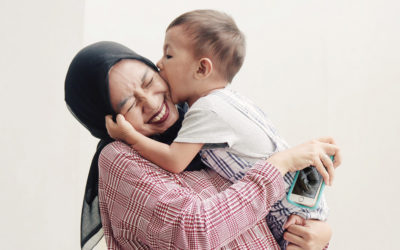Despite the huge advances in medicine and research, many underserved communities and certain identities still go underdiagnosed with autism. This is especially true for women and younger girls who tend to camouflage or disguise their symptoms. Camouflaged autism can fly under the radar even to medical professionals, which can have some adverse effects on a person’s life. In this post we’ll talk about the signs and effects of camouflaged autism.
What does Camouflaging Autism Look Like?
The process of camouflaging autism is often something that individuals on the spectrum don’t realize they’re doing. Instead, it can often be inspired by the societal pressure put on people to behave and appear a certain way to be deemed normal or successful. As a result, people on the spectrum, especially those that are undiagnosed in childhood, mirror and display the traits and behaviors that their neurotypical peers do. This can be an emotionally draining form of mimicry that is stressful and taxing to maintain.
The Diagnosis Dilemma
Some children, especially girls, learn to camouflage their autism from a very young age. This makes it exceptionally difficult for the standard diagnostic tests to be effective. As a result, many of those girls go without much needed support and services.
Some of those girls will get their diagnosis much later in life or not at all, and by then it can be hard to effectively handle their symptoms. Camouflaging is a likely contributor to the metric that three to four times as many boys than girls are diagnosed with autism. A societal shift that reduces the stigma around mental health and more inclusive diagnostic assessments can help get more children the support they need.
The Signs of Camouflaging
Getting behind the mask of camouflaged autism can be extremely difficult. Some of the signs can include:
- Fidgeting in Small, Discrete Ways: Some people who camouflage their symptoms and anxiety will take to disguising their fidgeting to very small and controlled movements that would be otherwise very hard to notice.
- Practicing Social Behavior Alone: A common form of camouflaging in adults, some individuals on the spectrum will practice interactions they anticipate having ahead of time with themselves.
- Mimicking Phrases and Behaviors in Conversations: To create the illusion of engaged and interested conversations, people camouflaging may consistently mimic and repeat behaviors and phrases they see others do.
For more ABA and autism related news and tips visit our blog and follow us on Facebook, Instagram, and Twitter! If you have questions regarding ABA therapy services or you’re interested in visiting one of our locations, don’t hesitate to reach out to us on our contact page. We’re always here to answer your questions and support your family’s needs as best as we can.



